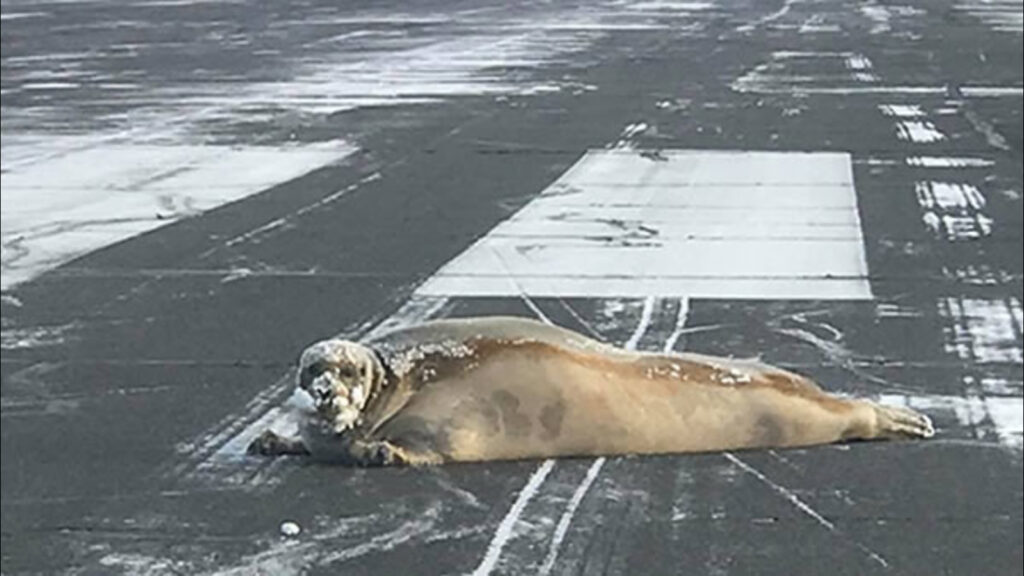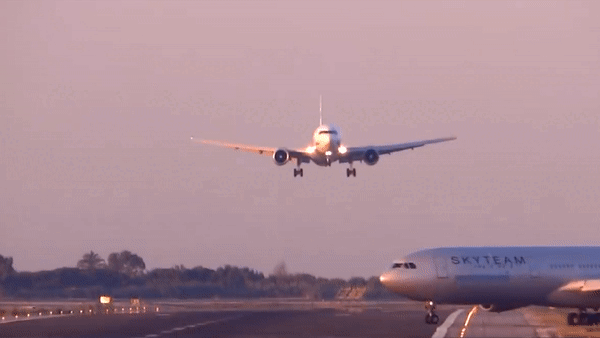Go-arounds are often described as routine. And the guiding principle is that we should be ready to execute them safely, accurately, and immediately on every approach, and without hesitation.
It sounds good on paper, but this expectation is among a myriad of niceties we tell ourselves that all competent pilots have covered. And I’m not sure I agree.

Rose tinted: “Go-arounds are normal, and we’re always ready and prepared for them!”
For starters go-arounds aren’t routine. They’re just not.
We know this to be true. On average, a long-haul pilot will do one every five to ten years.
Secondly there are the reasons behind them. Weather related go-arounds tend not to be the ones we’re struggling with. Why? Here’s one suggestion – because when conditions are marginal, we are ready for it – we’ve briefed it, we believe it may happen. Our brains are primed for action.
But what about when we’re not expecting it – when we’re not primed? When the weather is good, the airplane is on rails and sign-off is within arm’s reach. Are we as prepared then?
Incident histories are littered with go-arounds gone awry, and they often have a major trend in common – the crew weren’t ready for them. Because the reason for the go-around was unexpected, it wasn’t routine.
And when we encounter a non-routine event, we become fallible to limitations that all pilots possess in times of surprise or emergencies. Enter our ‘inner ape.’ It’s hard to tame, so when we have an emergency we fall back on one particular mantra. Ape repellent, if you will – ‘aviate, navigate, communicate.’ The idea is to break down an overwhelming situation into manageable chunks.

Poor little thing.
So why then are we failing to apply the same idea to unexpected go arounds?
A healthy dose of ‘deer in headlights’ might be the answer. It’s no secret that when we are surprised, our brains stop for moment. It is hard wired into us from the days when we were running away from woolly mammoths.

Fight or flight is instinctive in all of us.
Our instinct is to act now, and think later. And those big ol’ TOGA switches are a huge trigger. Once we push them, it’s on. We are bombarded with rapid fire mode changes, oodles of thrust, noise, configuration changes, high nose attitudes, and typically we’re going up faster than a fart in a bath.
Our brains can switch into overload mode – there is too much information coming at us and too fast to stay ahead of the airplane, or even with it.
Here’s a couple of scenarios to mull over – how would you manage your airplane?
- You’re instructed to go-around above the published missed approach altitude.
- ATC instructs you ‘caution traffic 1 o’clock 2 miles. Cancel published missed, maintain 1500′, turn left heading 180 degrees, expect visual circuit.’
- The pilot flying is about to bust through your missed approach altitude, but isn’t responding to you or ATC.
Had we not briefed the missed approach as routine, along with the runway lighting, expected taxiway turn-off and our parking bay, we might be more prepared. But the evidence is suggesting that we’re not.

There was nothing routine about this 400 pound seal that decided to take a nap on a runway in Barrow, Alaska.
Our approach to go-around training, along with other abnormals, needs to focus on the unexpected, the non-routine. The industry has already discovered that we learn less when we know what is coming in the sim, and that the real world is rarely as forgiving.
Danger Club returns!
We’re starting the conversation at sunset. Almost dark. A French Bee A350 is landing in Paris Orly, after an 11 hour flight from SFO. Almost home. But 3 miles out, the machine says “WINDSHEAR“, and the flight goes from routine to 🤡 go-around circus 🤡 in about 10 seconds.
The F/O checks out. Startled and frozen. The captain is now single pilot, but doesn’t know it. The airplane doesn’t know it either, so keeps flying- busting the altitude, heading for departing traffic. But nobody’s flying it.
Here’s your challenge: park any judgement on the crew at the door. Step inside DANGER CLUB, and ask, with your curious-raccoon-mind: “How could this happen to me?”
This is where we might start, but we don’t know where we’re going with this one …
> Go-Arounds ain’t always easy (even if they tell us they should be)
> How bad can startle be?
> How do we get ourselves back in the game?
> Was this all the Captains doing? (Even if the report focuses on the FO)
> Do we HAVE to go-around right away?
That’s where we start … this Thursday, July 14, at 1730Z.
Will you join us, curious raccoon?
> The (very readable) accident report is here.
> Also, there is an excellent – as always – video from Mentour Pilot about the whole incident. Highly recommend!
More on the topic:
- More: The Safety Watchlist 2022
- More: Is breaking the rules always bad?
- More: Safety used to be SEXY
- More: Danger Club is Back!
- More: Red Sky at Night, Aviator’s Fright
More reading:
- Latest: Mexico Customs Surprises: Pills, Vapes, and Laptop Rules
- Latest: Greenland NAT Alternates: Dec 2025 Update
- Latest: Crossing the Quiet South: From Australia to Argentina
- Safe Airspace: Risk Database
- Weekly Ops Bulletin: Subscribe
- Membership plans: Why join OPSGROUP?












 Get the famous weekly
Get the famous weekly 






At my airline, for YEARS, the Missed Approach was ALWAYS the exact same scenario. Now, we are FINALLY getting AQP, and we will be able to do a variety of Missed Approach scenarios.
Lately, I have had two Wind Shear go-arounds, and one for unexpectedly being too heavy to land (we fixed that just now with new fuel preflight procedures). Another recent go-around occurred when the Flying Pilot’s windshield wiper failed.
Thanks for sharing Cliff! I’ve had a few similar ones in my career too, it was always the unexpected ones that were the hardest work. Glad to hear you’re getting the chance to look at other scenarios in the sim too!